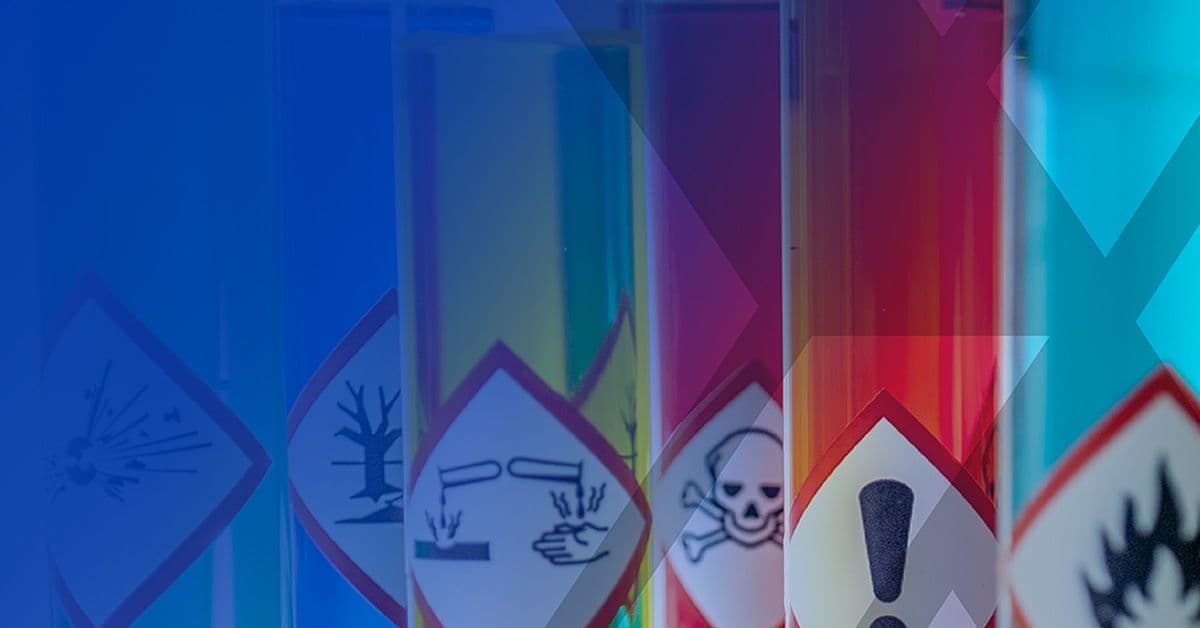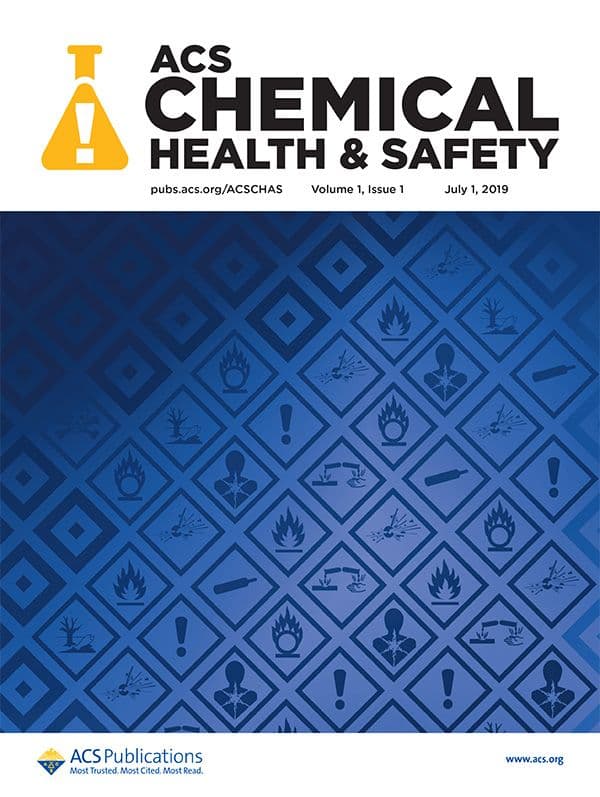In this three-part series, we review the importance of disclosing safety information in journal articles; provide tips and best practices for authors to formulate a well-written safety summary statement; and share additional resources that will help authors as they prepare their manuscripts for submission.

This article was originally published on October 10, 2022. Updated with additional resources on July 26, 2023.
The Hazard of Insufficient Safety Reporting
The importance of safety in the research laboratory is widely recognized, including maintaining awareness of potential hazards and associated risks. But what about when it comes to effectively communicating these hazards and risks1 as authors prepare their research for submission to a scientific journal?
When submitting a manuscript to an ACS journal, authors are expected to disclose potential safety hazards and other relevant information. These reporting requirements came into force in 2017,2 driven in part by a review of author guidelines across more than 720 chemistry journals—which found that only 8% mentioned safety information requirements for authors.3
The ACS Divisions of Chemical Health and Safety (CHAS) and Chemical Information (CINF) along with the Committee of Chemical Safety (CCS) also conducted a survey of chemical safety in academia around the same time, and they found while most researchers were somewhat familiar with formal, industrial-level safety management processes, they rarely used them in their daily work—and few consistently shared them in their publications.4 Perhaps unsurprising, then, that a decade ago 46% of scientists had experienced some sort of injury in the lab and 30% had witnessed at least one major incident requiring medical attention.5
What Information Should be Included in a Safety Statement?
The Author Guidelines of every ACS journal state that an author “must emphasize any unexpected, new, and/or significant hazards or risks associated with the reported work.”6 If an experiment requires specialized equipment, procedures, or training beyond basic laboratory practices, the author must provide sufficient information so that others who may want to reproduce or build upon the published work can easily understand the hazards and risks involved and replicate the processes safely.
Even though a chemical may carry a “significant risk” and must be reported does not mean it cannot be used. Laboratory hazards and risks can be managed using RAMP methodology: Recognize hazards, Assess and Minimize risks, and Prepare for emergencies.7 Chemistry professionals must therefore be proficient in evaluating hazards, conducting assessments, and mitigating any identified risks. ACS recognizes this in both the Society’s Core Value of Safety and their position statement on safety in the chemical enterprise.8
Authors must emphasize any unexpected, new, and/or significant hazards or risks associated with the reported work.
Doing What’s Right
Chemical safety is both an ethical and legal responsibility for chemistry professionals, and it is necessary for the protection of both researchers themselves and of the broader scientific community. As principal sources of chemical information, it is imperative that both authors and journals use their platforms to educate readers about inherent risks in the experiments they publish. By championing an ethical, transparent, and positive safety culture, there is hope that scientists will change how they think about safety and incorporate it as a fundamental part of their role.9
Part 2: Tips for a Well-Written Safety Statement
Part 3: FAQs and Additional Resources
Further Reading
ACS SAFETY RESOURCES
ACS Chemical Health & Safety
ACS Committee on Chemical Safety (CCS)
ACS Division of Chemical Health and Safety (CHAS)
ACS Center for Lab Safety
ACS Essentials of Lab Safety for General Chemistry: A Course
VIRTUAL AND SPECIAL ISSUES
Process Safety from Bench to Pilot to Plant
FROM THE ACS AXIAL ARCHIVE
Safety Is Science: ACS Publications Recognizes National Safety Month
Sharps in the Lab: Safety Procedures
How to Make Safety a Priority Before Students Enter the Lab
The Missing Piece of the Lab Safety Puzzle
RAMP Up Your Safety Education and Practice
References
- McEwen, L. and Sigmann, S. Communicating Safety Information. ACS Guide to Scholarly Communication 2020, 1.3.1–1.3.7.
- Kemsley, J. ACS Journals Enact New Safety Policy. Chem. Eng. News 2016, 9, 48, 7.
- Goode, S. R. and Grabowski, L. E. Review and analysis of safety policies of chemical journals. J. Chem. Health Saf. 2016, 23, 3, 30–35.
- McEwen, L. et al. Baseline survey of academic chemical safety information practices. J. Chem. Health Saf. 2018, 25, 3, 6–10.
- Nitsche, C. I. Promoting safety culture: An overview of collaborative chemical safety information initiatives. J. Chem. Health Saf. 2019, 26, 3, 27–30.
- Safety Considerations. ACS Publications Author Guidelines.
- What is RAMP? The ACS Center for Lab Safety.
- Safety in the Chemistry Enterprise: ACS Position Statement.
- Bertozzi, C. R. Ingredients for a Positive Safety Culture. ACS Cent. Sci. 2016, 2,11, 764–766.
